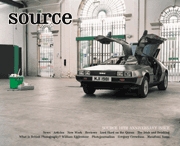EDITORIAL:
Issue 31 — Summer 2002
Issue 31 — Summer 2002
View Contents ▸
SOURCE 31 (DECADE)
It is now ten years since the first issue of Source was published in Summer 1992. We celebrate our anniversary with a bumper issue. With the football world cup and the Queen's Golden jubilee underway this summer, national identity will be at the forefront of people's minds over the next few months. This issue looks at some aspects of the way these identities are formed. Douglas Hurd, who was both a Foreign Secretary and Home Secretary in the previous government describes the role of the Queen as an apolitical figurehead for British identity. Neil Jarman looks at the role of the Queen for one component of Britain, the unionist community of Northern Ireland, and discovers their loyalty to the monarch is not unconditional.
Irish identity has in the past been negatively associated with drinking. Martin Bruhns describes the way the Irish tourist board and Irish drinks manufacturers have worked in tandem to transform this image into a positive and commercially successful brand. Eoghan McTigue in his series Tricolour has taken the white central section from three European flags leaving only a sliver of the colours that define the nations they represent. These pictures offer a kind of nuetral territory inat the centre of national signifiers. Finally this summer will also see the most recent example in the tradition of British photography surveys, organised by the Photographer's gallery in London. David Brittain looks at previous examples of this tradition and identifies the the different strategies curators have used to bring together disperate types of photographic work and identify the British 'art photographer'.
John Duncan and Mark Curran have been photographing respectively in Belfast and Dublin over a period that has seen great changes for these two cities. Mark Curran's portraits show the people involved in the construction of the 'new Ireland' and the users of its recently acquired financial district. John Duncan's pictures describe a personal experience of inhabiting Belfast played out against a backdrop of ongoing sectarian tension and the regeneration of the city.
— Editors





